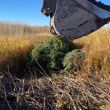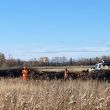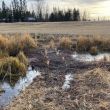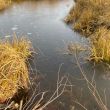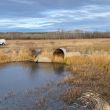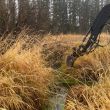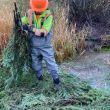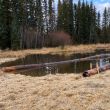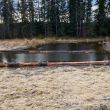East Murray
Background
Much of the area along East Murray Creek has been subject to extensive anthropogenic disturbance, including logging, land clearing for agriculture, and urban development. The upland forested regions across the central interior of British Columbia experienced a Mountain Pine Beetle (MPB) epidemic between 1997 and 2006, resulting in widespread mortality of pine stands. Subsequent salvage logging of dead pine has led to significant deforestation, leaving many watersheds heavily harvested. These extensive alterations have contributed to cumulative impacts on aquatic ecosystems, including hydrological and habitat degradation.
Hydrological data and recent site inspections, supplemented by aerial imagery, reveal pronounced flow variability in the East Murray Creek system. Peak flows occur during spring freshet, while summer months are characterized by critically low or intermittent flows. The severity of this flow regime has been exacerbated by the drought of 2023, which is forecast to persist through 2024. The availability of water in this system is now critically limited, posing significant challenges for ecosystem sustainability.
-
Loss of riparian vegetation and floodplain connectivity appears to result from historic land clearing and development practices that failed to preserve critical ecosystem functions. Cumulative impacts observed in priority rehabilitation areas include:
-
Severe streambank erosion, contributing to sedimentation.
-
Limited coarse woody debris within stream channels and absence of woody debris interacting with water during summer months.
-
Reduced availability of deep pools and critical spawning habitats, with gravel substrates embedded with fine sediments.
-
Loss of shade and cover, further reducing habitat quality.
These conditions compromise key aquatic habitat functions, including spawning, incubation, and overwintering capacity. To address these challenges and improve fish habitat, three overwintering ponds were constructed. These ponds are designed to increase the system’s capacity for water storage, mitigating low-flow conditions and providing essential refuge habitat to support fish survival during winter months.
Proud Partners:

